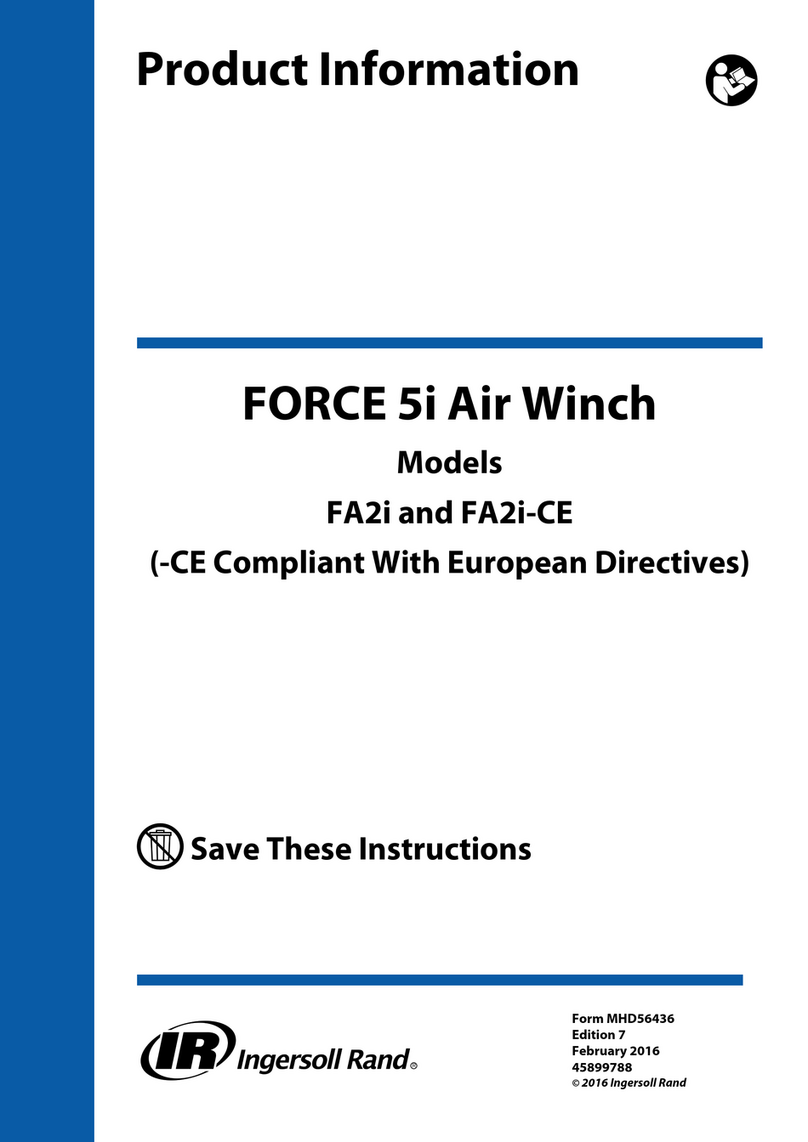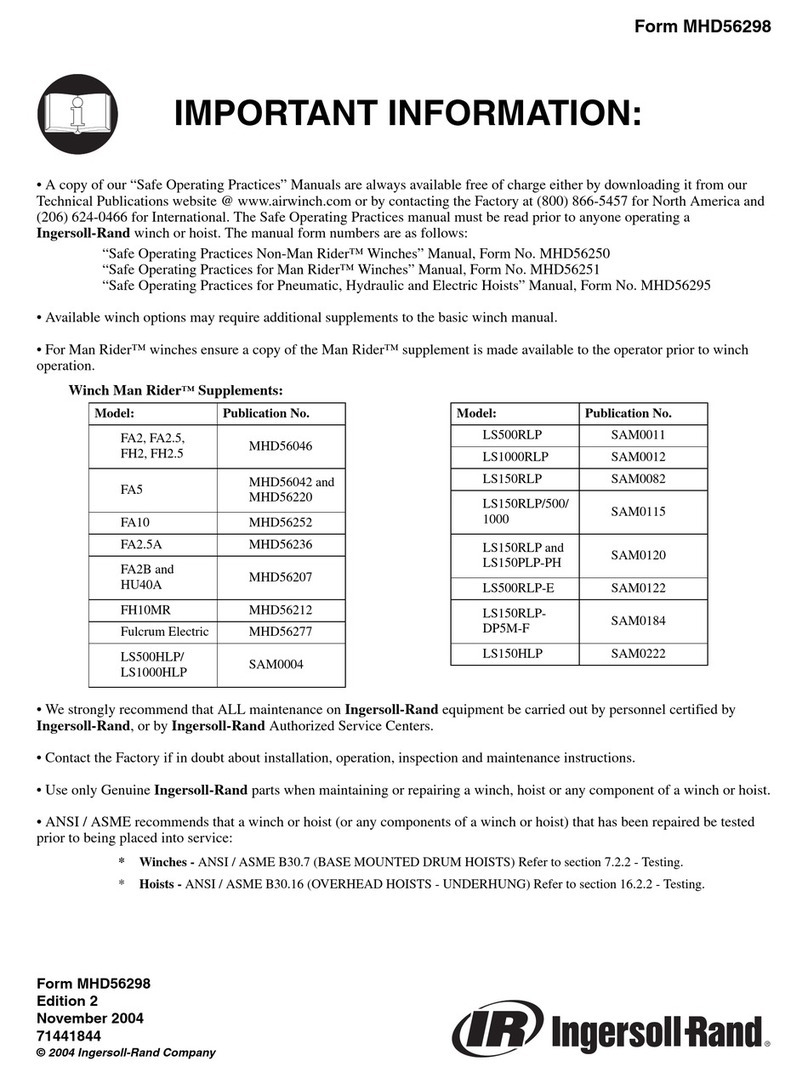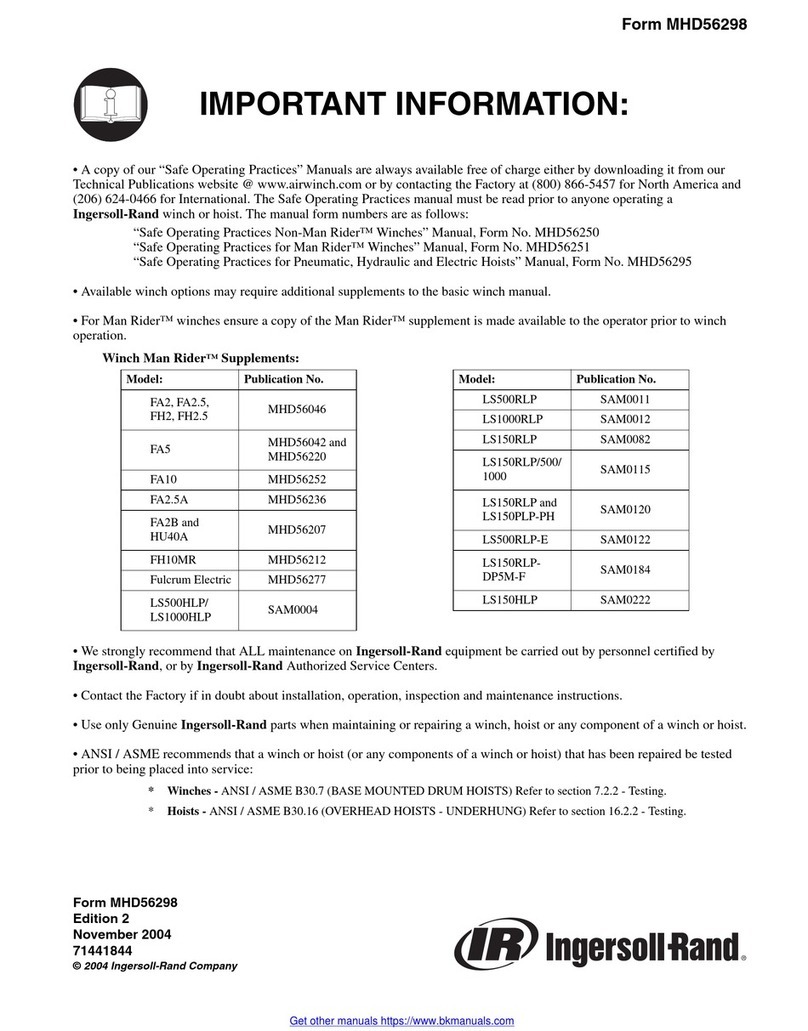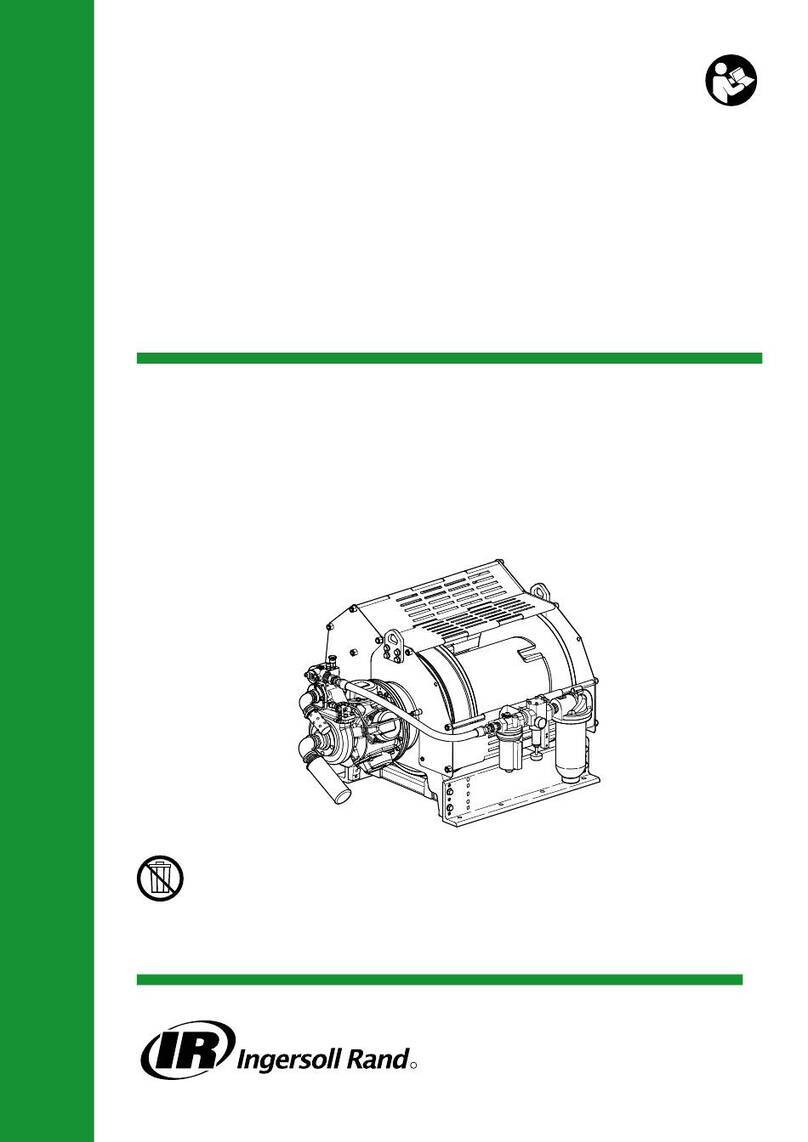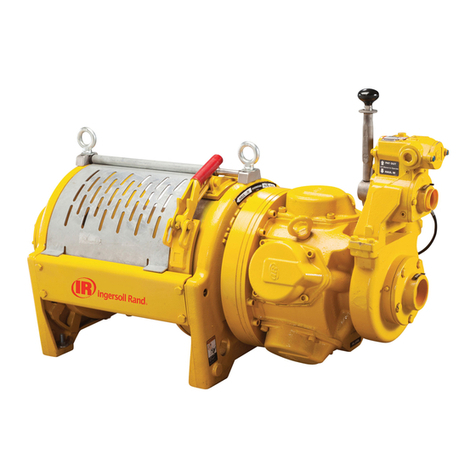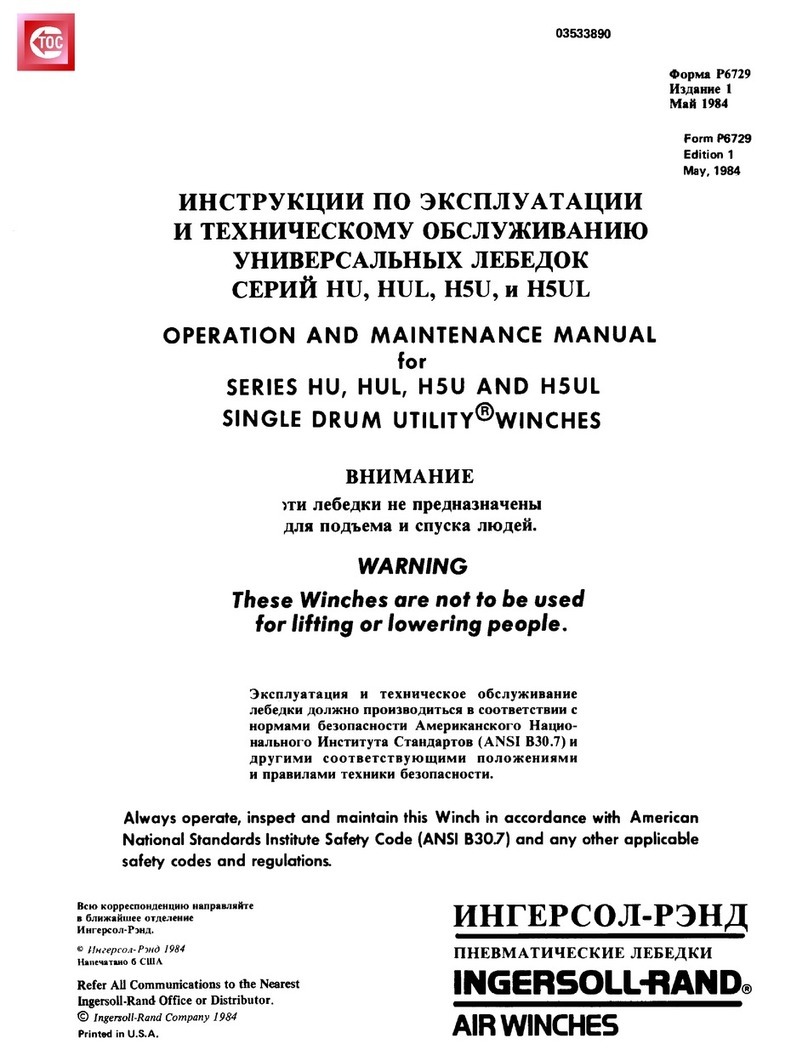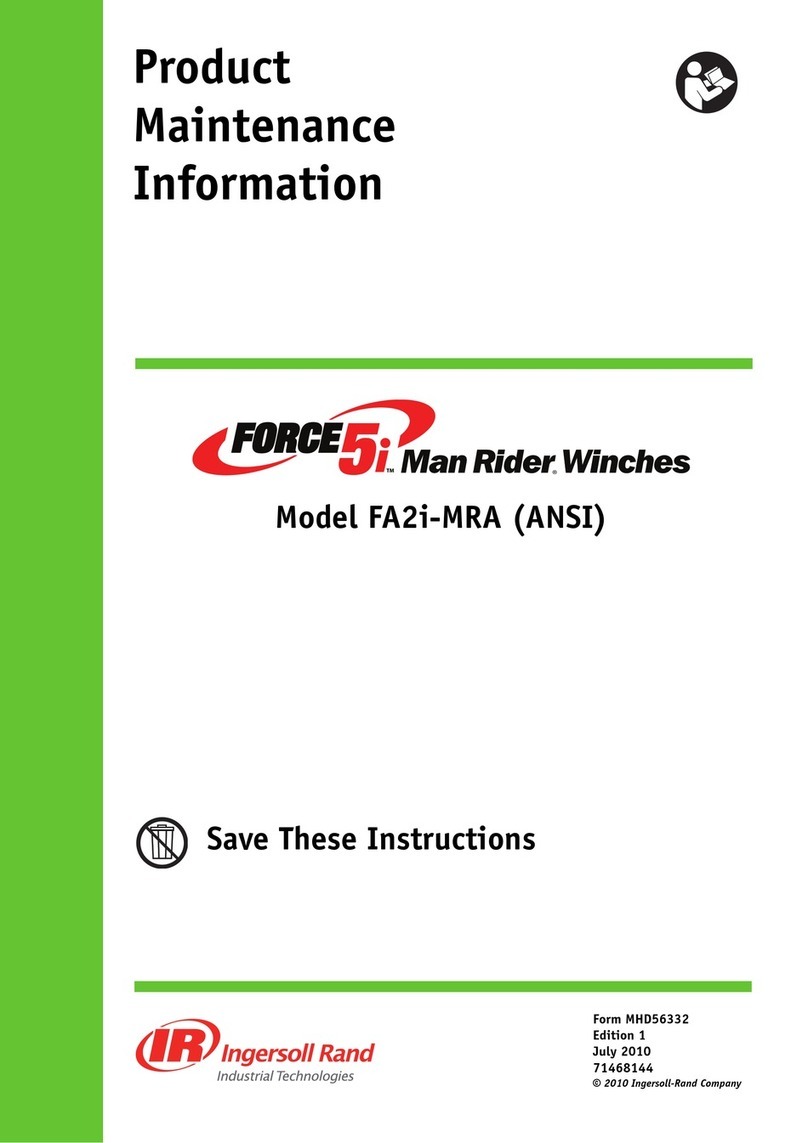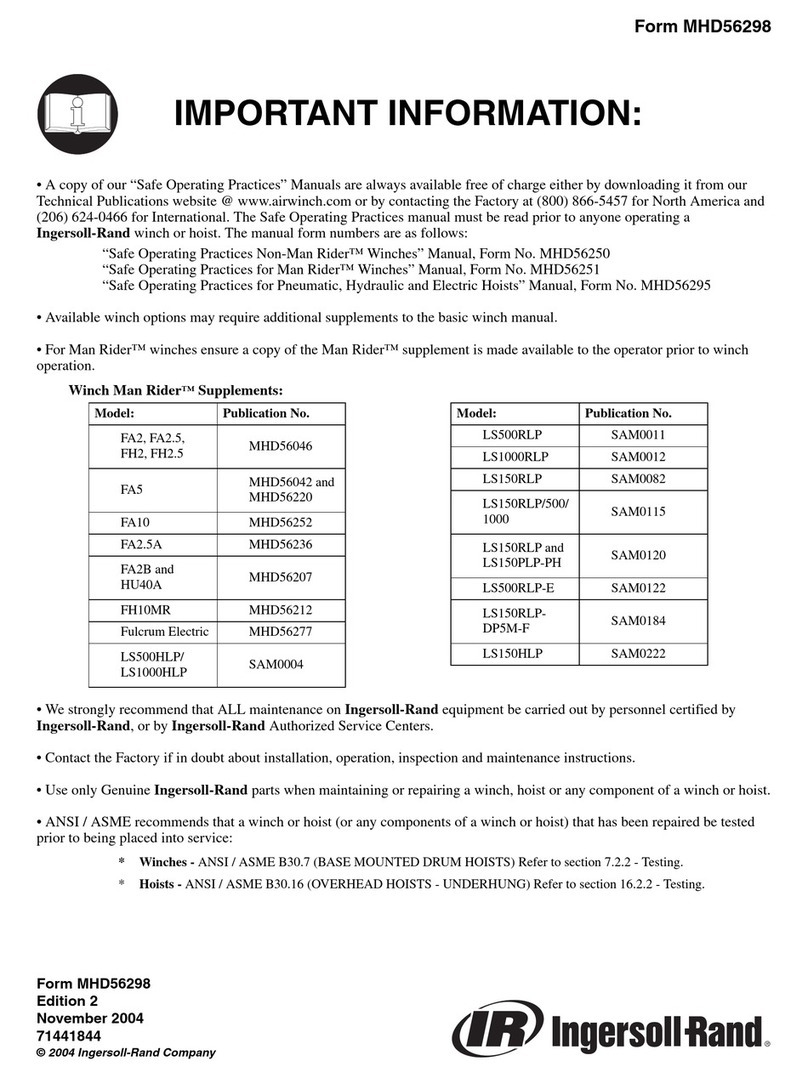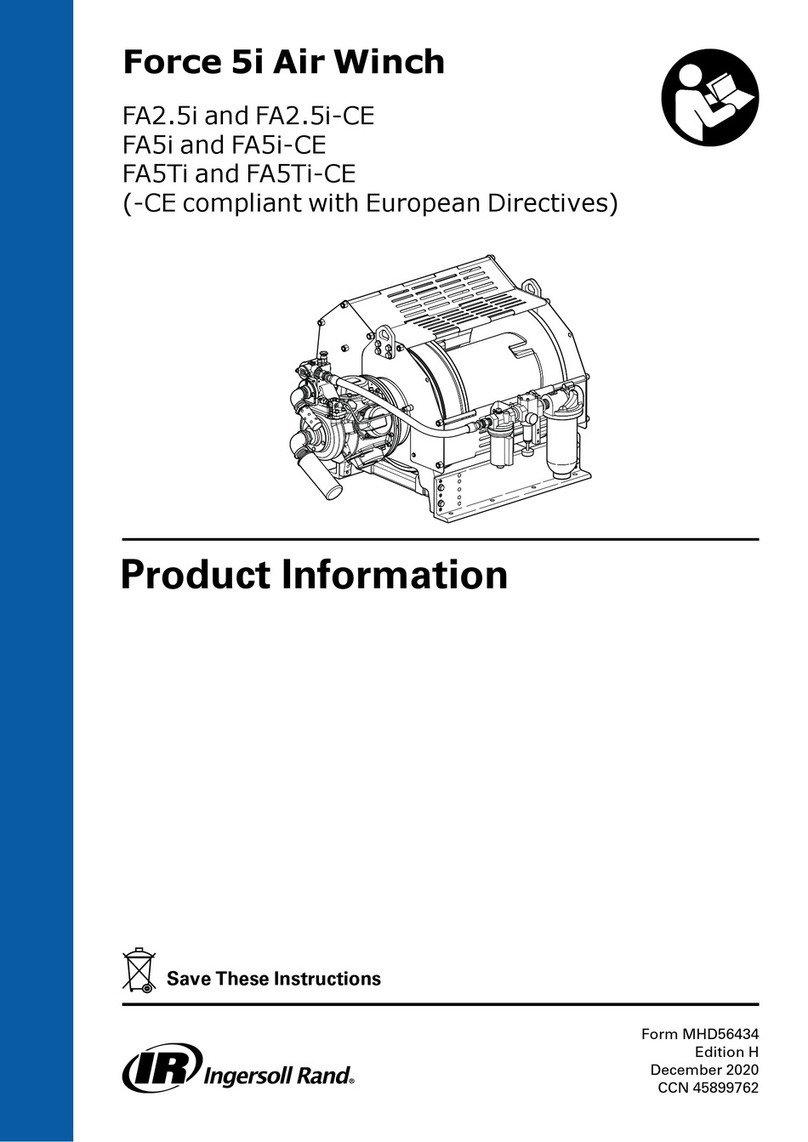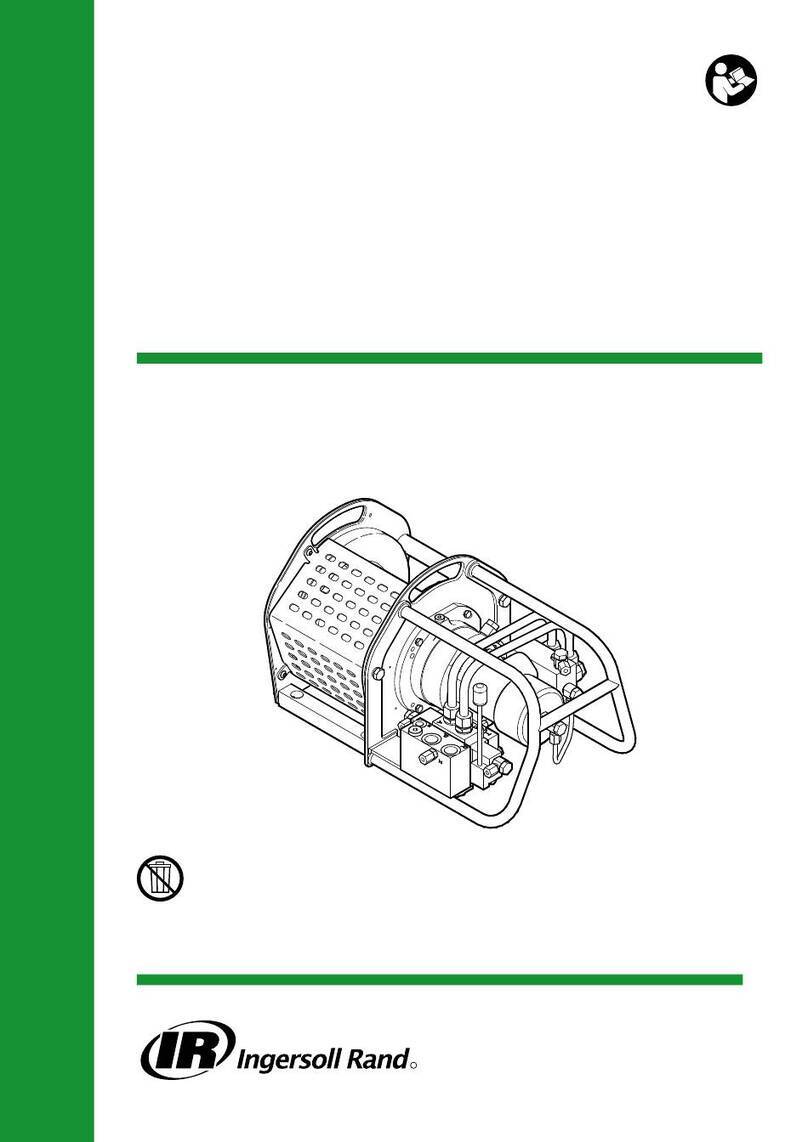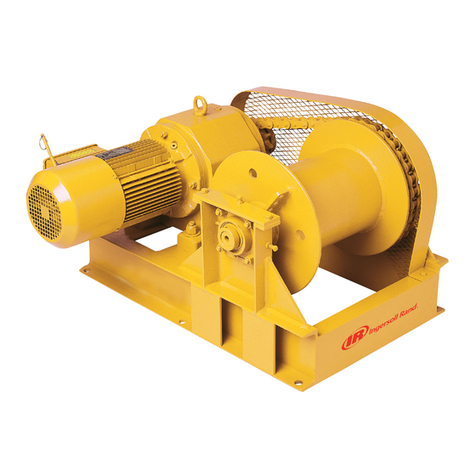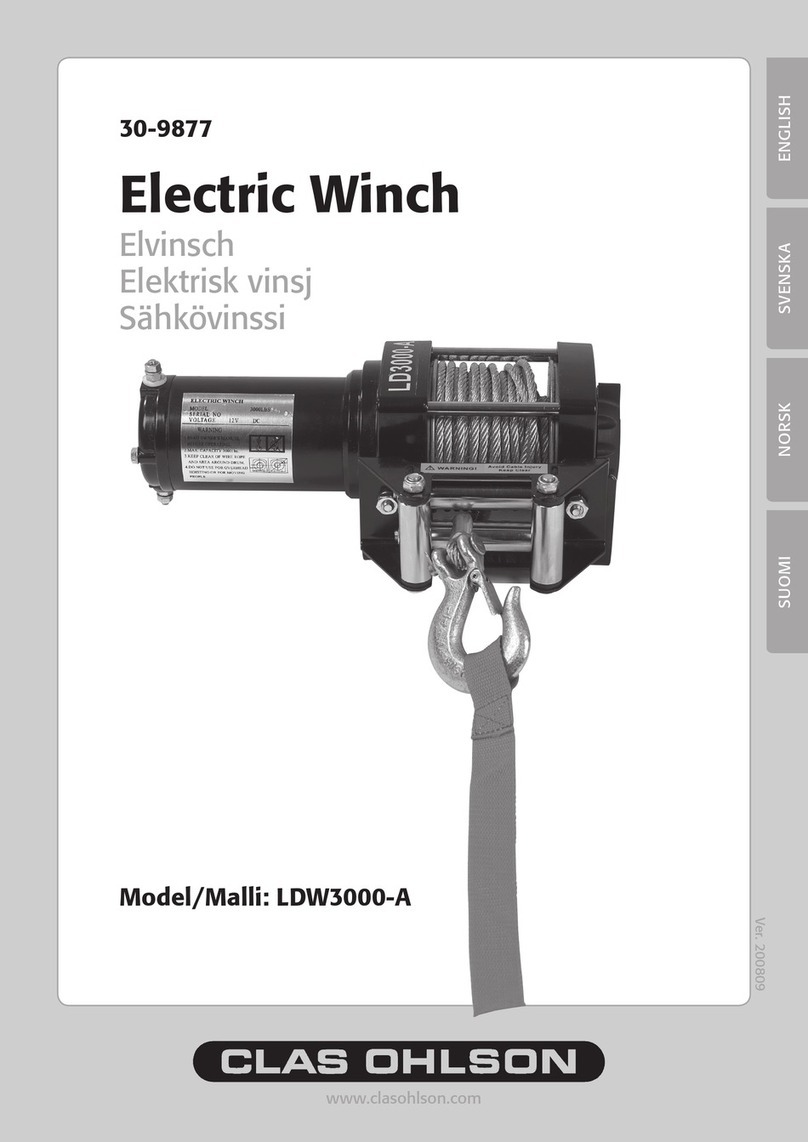
B.P 59
59450 SIN LE NOBLE - FRANCE
TEL. (33) 27.93.08.08
TELEX 820 221
TELEFAX (33) 27.93.08.00
NUMERO DE NOMENCLATURE
TREUIL DE LEVAGE HYDRAULIQUE
HYDRAULIK HUBWlNDE
HYDRAULIC WINCH
LIFTSTAR 2000 H -1
I NUMERO DU DOCUMENT
LECHEF DU BUREAU D’ETUDES
H - INSPECTION
There are two types of inspection, the frequent inspection performed by the operator
while using the winch and periodic inspections performed by qualified personnel.
Careful inspection on a regular basis will reveal potentially dangerous conditions while
still in the early stages, allowing corrective action to be taken before the condition
becomes dangerous
Any deficiency revealed through inspection must be reported to an appointed person. A
determination must be made as to whether a deficiency constitutes a safety hazard
before resuming operation of the winch.
Records and Reports
Some form of inspection record must be maintained for each winch, listing all points
requiring periodic inspection. A written report should be made monthly on the condition
of the critical parts of each winch. These reports should be dated, signed by the person
who performed the inspection, and kept on file where they are readily available to
authorized personnel.
FREQUENT INSPECTION
beginning
On a winch in continuous service, frequent inspection should be made at the
of each shift. In addition, visual inspections should be conducted during regular service
for any damage or evidence of malfunction.
1 - OPERATION. Check for visual or abnormal noises which could indicate a defect. Do
not operate a winch unless the wire rope feeds onto the winch drum smoothly. If wire
rope binds or jumps, clean and lubricate the wire rope. If problem persists, replace the
wire rope. Do not operate the winch until all defects have been corrected.
2 - HYDRAULIC CIRCUIT. Check hydraulic lines and components for leakage. Repair if
necessary - The hydraulic circuit and the tank must be very clean, without any metallic
particule. Do not introduce impurities in the circuit when mounting the fittings.
3 - WIRE ROPE. Wire rope is a consumable item which must be replaced when worn.
The following list is a guide to the accepted standards by which wire rope must be
judged and is not presented as a substitute for an experienced inspector :
a . Damage, such as bird cages, kinking, core protrusion, crushing, heat damage, and
main strand displacement,
b . Corrosion and nicking
c . Wear of crown wires. Replace at 1/3 wear of any crown wire.
d . Broken wires or strands, particularly at connections. Replacement is necessary if
one wire is broken at a connection ; six wires broken within one lay ; three wires broken
in one strand within one lay.
e . Lubrication.
Replace wire rope if any doubt exists as to wire rope serviceability.

